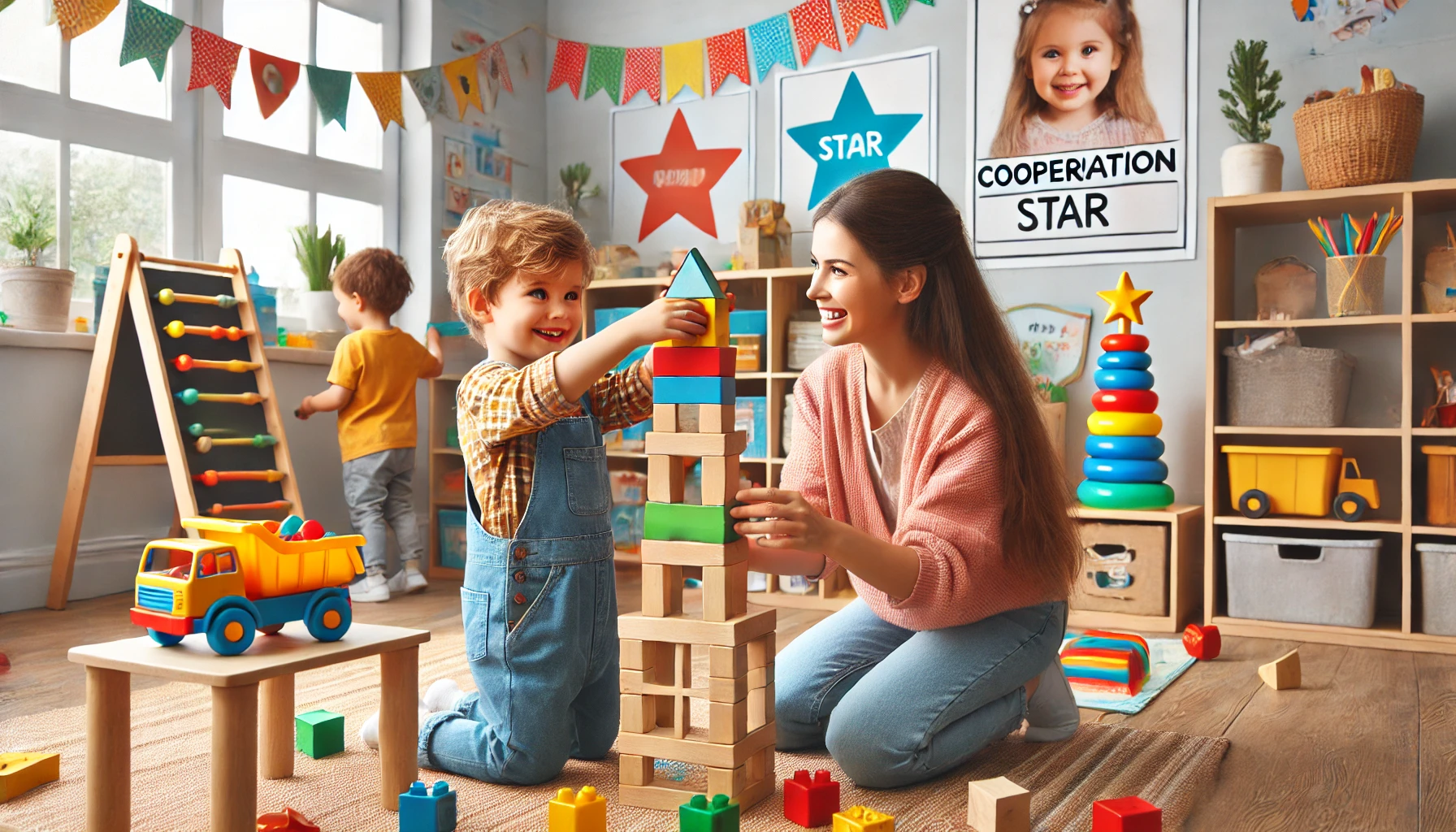How to Teach Young Children About Sharing and Cooperation
Sharing and cooperation are skills that help children build friendships, work as part of a team, and solve problems together. While young children are naturally protective of their toys and space, with gentle guidance and fun activities, they can learn that sharing feels good and cooperation leads to success. These lessons make playtime and daily life more enjoyable for everyone!
Why Teaching Sharing and Cooperation Matters
- Helps build friendships and social skills
- Fosters empathy and understanding
- Encourages teamwork and problem-solving
- Promotes patience and compromise
- Creates a more harmonious environment
1. Explain Sharing in Simple Words
Start with clear, relatable explanations.
Activity Idea:
- Say: “Sharing means letting someone else use something you like.”
- Use toys as examples: “When we both play with blocks, it’s more fun!”
- Ask: “How does it feel when someone shares with you?”
What Kids Learn:
- That sharing is a kind action.
- Empathy toward others’ feelings.
- Positive emotions linked to generosity.
2. Model Sharing and Cooperation Daily
Show children how it looks in real life.
Activity Idea:
- Share things with your child, like snacks or crayons, and say: “I love sharing with you!”
- Include cooperative tasks: “Let’s build this puzzle together.”
- Point out sharing moments in everyday life.
What Kids Learn:
- Adults value sharing too.
- Positive behavior through observation.
- Joy in cooperative activities.
3. Use Turn-Taking Games
Practice patience and fairness.
Activity Idea:
- Play simple games that require taking turns, like rolling a ball or board games.
- Use a visual aid: a timer or a “turn card” to show whose turn it is.
- Praise patience: “You waited so kindly for your turn!”
What Kids Learn:
- Patience and waiting skills.
- Fairness and respect.
- Fun in turn-based play.
4. Read Books About Sharing and Teamwork
Stories teach powerful lessons.
Activity Idea:
- Read books like Llama Llama Time to Share by Anna Dewdney or Should I Share My Ice Cream? by Mo Willems.
- Ask: “What did the characters do to cooperate?”
- Draw pictures of friends sharing toys or playing together.
What Kids Learn:
- Relatable examples of sharing.
- Emotional connection to teamwork.
- Inspiration for everyday play.
5. Create Cooperative Art Projects
Work together toward a shared goal.
Activity Idea:
- Make a big poster where each family member adds drawings.
- Build a block tower together, with each person adding pieces.
- Celebrate teamwork: “Look what we made together!”
What Kids Learn:
- Collaboration and communication.
- Pride in shared accomplishments.
- Creativity through teamwork.
6. Praise Sharing and Cooperative Moments
Positive reinforcement encourages repetition.
Activity Idea:
- Say: “I saw you let your friend play with your toy—that was so kind!”
- Use a “Cooperation Star” chart to celebrate helpful moments.
- Reflect: “How did it feel to share today?”
What Kids Learn:
- Recognition of positive actions.
- Motivation to continue kind behavior.
- Reflection on feelings and choices.
7. Role-Play Scenarios Together
Practice makes perfect.
Activity Idea:
- Pretend play: “What if your friend wants to play with your toy?”
- Practice sharing snacks or toys in a playful setting.
- Praise cooperative responses: “That was a great way to share!”
What Kids Learn:
- Comfort with real-life situations.
- Problem-solving in social settings.
- Confidence in making kind choices.
8. Highlight the Joy of Shared Experiences
Focus on how fun it is to cooperate.
Activity Idea:
- Point out: “Playing together made the game even better!”
- Take photos of cooperative play and make a “Sharing Memories” album.
- Celebrate group successes with small rewards or family cheers.
What Kids Learn:
- That cooperation is rewarding.
- Shared joy and connection.
- Positive feelings about teamwork.
Final Thoughts
Teaching young children about sharing and cooperation builds the foundation for positive social relationships. With clear explanations, playful practice, and lots of encouragement, kids learn that working and playing together feels good and leads to happy experiences. These lessons stay with them, helping them grow into caring, collaborative individuals.
